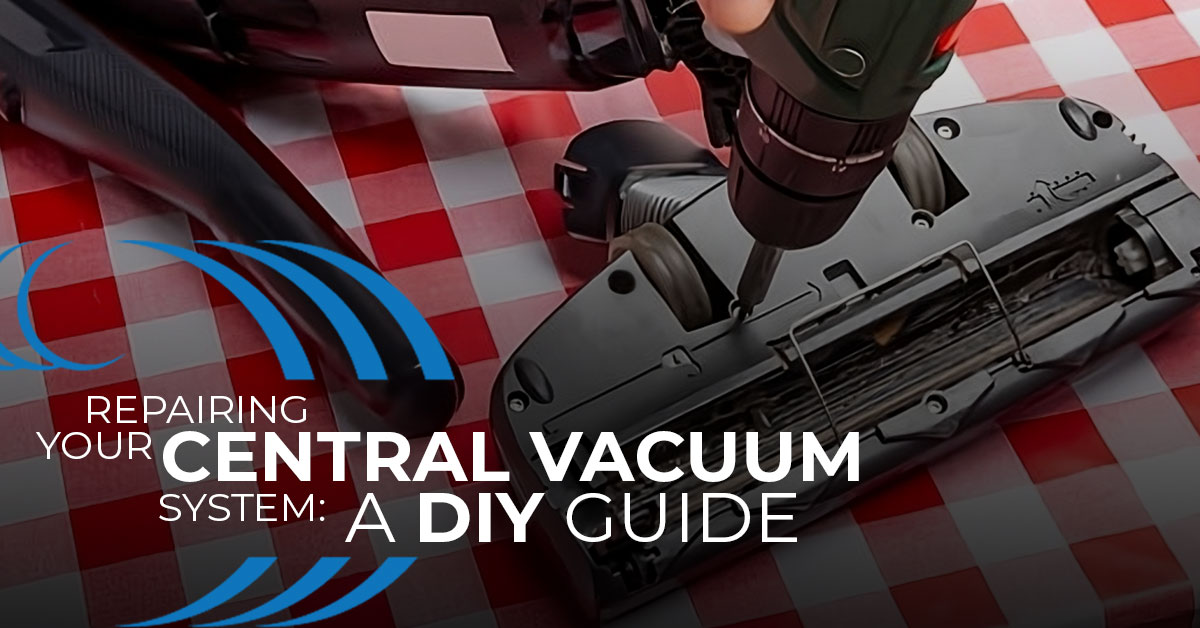
Boosting Productivity in Office Buildings with Central Vacuum
In today’s fast-paced work environment, maintaining a clean and organized office space is crucial for productivity. Office buildings often struggle with keeping their premises clean

In the world of Home Cleaning, Central Vacuum Systems have become a staple in many Modern Homes. They provide an Efficient Solution for keeping your living spaces clean and dust-free. However, like any home appliance, they may require some maintenance and repair. In this DIY guide, we’ll walk you through the Top 10 most common issues and how to fix them yourself.
Before we dive into the repair guide, it’s important to understand how your central vacuum system works. These systems are built into your home, with the power unit usually installed in a basement or garage. The power unit is connected to inlet valves in various parts of the house via tubing concealed within the walls.
While central vacuum systems are generally reliable, they can develop issues over time. Here are the top 10 most common problems you might encounter:
No suction: This is often caused by blockages in the hose or tubes.
Reduced suction: This could be due to a full dirt canister, a clogged filter, or leaks in the system.
Motor not running: If your system’s motor isn’t running, it could be an electrical issue.
Overheating: This can happen if the system is overused or if there’s a blockage causing the motor to work harder than usual.
Now that we’ve identified the common issues, let’s look at some DIY solutions:
Clearing blockages: If there’s no suction or reduced suction, check the hose and tubes for blockages. You can use a long brush or a plumber’s snake to clear any obstructions.
Emptying the dirt canister: If the suction is low, the dirt canister may be full. Simply empty the canister and check if the suction improves.
Checking the filter: A clogged filter can also cause low suction. Most systems have washable filters. Remove the filter, wash it, let it dry completely, and then replace it.
Inspecting for leaks: Leaks in the system can reduce suction. Check the tubing and connections for any signs of damage and repair or replace as necessary.
Dealing with electrical issues: If the motor isn’t running, it could be an electrical issue. Check the circuit breaker and power supply. If these are fine, you might need to replace the motor.
Preventing overheating: If your system is overheating, make sure there are no blockages. Also, avoid overusing the system. If it continues to overheat, it may be time to replace the motor.
While these DIY fixes can help resolve common issues with your central vacuum system, remember that some problems may require professional assistance. Always prioritize safety when attempting any DIY repairs. With proper care and maintenance, your central vacuum system will continue to offer an efficient cleaning solution for your modern home.

In today’s fast-paced work environment, maintaining a clean and organized office space is crucial for productivity. Office buildings often struggle with keeping their premises clean

Central vacuums in animal shelters & vet clinic: Explore how these systems boost hygiene, efficiency, and air quality.

In the world of home entertainment, a home theater is a luxury that many homeowners dream of. It’s an immersive experience that brings the magic

A central vacuum system is a significant investment that promises convenience, powerful suction, and improved indoor air quality. However, choosing the right central vacuum hose
Our home automation products are at the forefront of technology, offering a blend of convenience, security, and efficiency. As a Homewave dealer, you’ll be part of a network transforming homes into smart, futuristic spaces.
Embark on this rewarding journey with us and leverage the power of innovative technology.
Please fill out this form and become a Homewave Dealer.